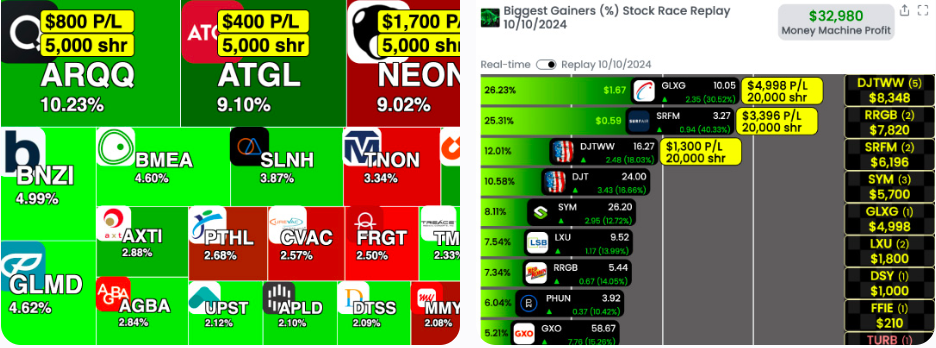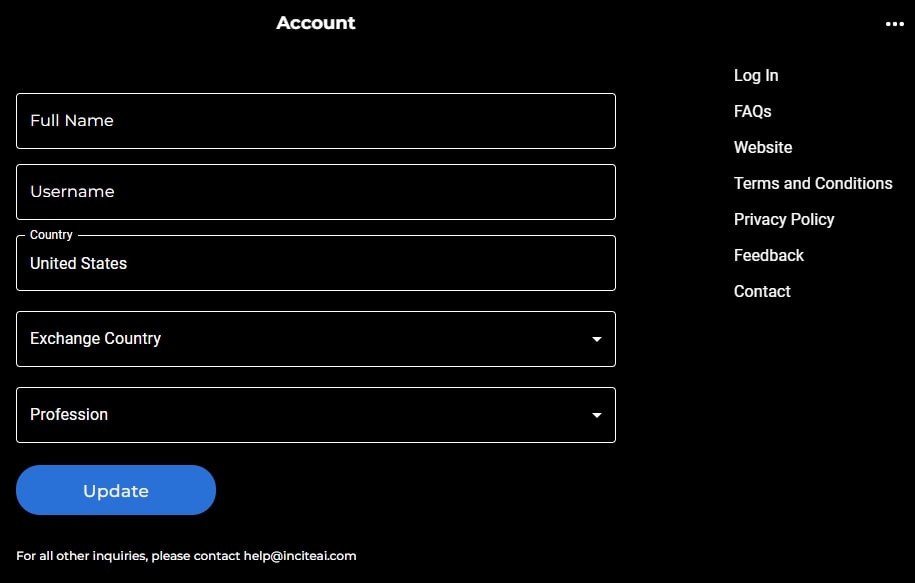20 Recommended Ideas For Selecting AI Stock Trading Platform Sites
20 Recommended Ideas For Selecting AI Stock Trading Platform Sites
Blog Article
Top 10 Ways To Evaluate The Security And The Privacy Of Ai Trading Platforms
Security and privacy of trading platforms based on AI are important, since they deal with financial and personal data. Data breaches or mishandling could result in reputational and financial losses. These are the top 10 tips to help you assess the privacy and security features on these platforms.
1. Consider Data Encryption
Security on the move: Ensure that the service you are using has secure protocols that encrypt your data as it is transmitted between their servers and your device (e.g. TLS/SSL).
Data encryption for sensitive information at rest: Check the encryption of sensitive information on the platform's server using high-quality encryption standards (e.g. AES-256).
Check for end-toend security This is an absolute must for anyone who wants to safeguard sensitive communications or data.
2. Assess Authentication Measures
Two-factor authentication (copyright). Make sure your platform has support for copyright. This will add another layer of security.
Check the biometric authentication options for mobile applications (e.g. facial recognition, fingerprint).
Password policies: Find out whether the platform has strict policies regarding passwords (e.g. minimum length and complexity requirements).
3. Check for regulatory compliance
Financial regulations: Make sure you are in conformity with the relevant financial regulations (e.g. SEC FINRA MiFID II).
Data protection laws: Verify your compliance with privacy laws (e.g. GDPR, CCPA), if you're in or doing business with regions covered by these laws.
Audit certifications - Verify to see if the platform is certified or has had external security audits (e.g. SOC 2, ISO 27001).
Review Controls for Accessing Data
Role-based access - Make sure that the platform has role-based control (RBAC) that restricts access to data only to authorized users.
Make sure you're able to set different permission levels for teams or users.
Activity monitoring: Determine whether the platform monitors and records the user's behavior to detect suspicious behavior.
5. Assess the vulnerability of your organization.
Regular updates: Ensure that the platform is regularly updated to patch vulnerabilities.
Penetration test: Make sure that your system is tested regularly to detect and fix any security flaws.
Bug bounty programs: Verify whether there is a bug bounty program available on the platform to encourage security researchers from outside to report weaknesses.
6. Evaluate Data Privacy Policies
Transparency The privacy policies of the platform to understand what data you provide will be used, collected and shared.
Data minimization: Ensure that the platform collects only information that is necessary for its operation.
Third-party sharing: Determine whether the platform is sharing data with third parties, and If so, under what conditions.
7. Secure API Use is Checked
API security. Ensure APIs use secure authentication methods (e.g. OAuth keys, API keys), and that data is protected.
Rate limitation - Make sure that the API is equipped with rate limitations to prevent abuses or attack with brute force.
Review the access logs and see if they are being recorded for monitoring and auditing.
8. Assess the recovery of an incident and respond
Incident response plan: Make sure the platform has an plan for responding to incidents such as data breaches or security incidents.
Notification policies: Verify that the platform is able to notify users promptly in the event of a security incident.
Backups of data: Make sure that the platform is backed up with its data on a regular basis and has an emergency recovery plan.
9. Evaluation of Physical Security Measures
Data center security: Ensure that the servers of the platform are located in secure data centers with physical security measures (e.g., surveillance, access controls).
Redundancy: Verify that the platform is protected by redundant systems to ensure that data is available in the event of hardware failure.
Geographic distribution: To boost resilience, check if the data is distributed over several geographic locations.
10. Test privacy controls for users
Data deletion: Ensure that your platform allows deletion of all of your data if you decide to cease using it.
Privacy settings: Check if the platform provides privacy settings to limit what data is public or shared.
Anonymization: Check if the platform anonymizes the data that is used for machine learning or analytics.
Bonus Tips
User feedback and reputation Review feedback and reviews from users to determine the credibility of the platform's security and privacy.
Trial period: Take advantage of the demo or trial version for free to test the platform's security features and privacy settings.
Customer Support: Check that the platform has the capacity to offer a solid support service in case of security concerns.
These tips will assist you in evaluating the privacy and security aspects of AI stock-predicting/analyzing trading platforms. This will ensure that your personal and financial information is secure. Secure platforms protect your assets and increases trust in its services. Follow the best ai for trading advice for website tips including ai investing app, ai investing platform, ai investment platform, ai stocks, stock ai, best ai trading app, ai trading tools, market ai, ai stock trading app, ai stock market and more.
Top 10 Tips For Evaluating The Regulatory Compliance Of Ai Stock-Predicting/Analyzing Trading Platforms
The regulatory compliance aspect plays an important aspect in evaluating AI platforms for analysis and prediction of stocks. Compliance assures that the system works within legal frameworks, protects user data, and adheres to financial regulations, which reduces the chance of legal issues or financial sanctions. Here are 10 top suggestions for evaluating the regulatory compliance of such platforms:
1. Verify the Licensing & Registration
Regulators: Make sure the platform is registered and licensed by appropriate financial regulatory bodies (e.g., SEC in the U.S., FCA in the UK, ASIC in Australia).
Broker partnership: If the platform is integrated with brokers, make sure that the brokers are also licensed and properly regulated.
Public records: Visit the website of the regulator to determine whether the platform was licensed or if it's been in violation of the law.
2. Look for data privacy Compliance
GDPR If you're serving or operating within the EU Make sure the platform is compliant with the General Data Protection Regulation.
CCPA : California Consumer Privacy Act (CCPA) conformity should be checked by users.
Data handling Policies: Read the platform's policy on data privacy to make sure that it clarifies exactly how data from users are stored, used and shared.
3. Evaluate Anti-Money Laundering (AML) Measures
AML Policies The platform must have strong AML (Anti-Money Laundering) policies to detect money laundering and stop it from happening.
KYC procedures: Verify if the platform follows Know Your Customer (KYC) procedures to verify identity of the user.
Monitoring transactions: Ensure that the platform monitors transactions to detect suspicious behavior and alerts relevant authorities.
4. Verify that you're in compliance Trading Regulations
Market manipulation: Make sure that the platform contains measures to prevent market manipulation, such as fake trading, wash trading.
Order types: Confirm that the platform complies with the regulations for order types (e.g. there is no unlawful stop-loss hunting).
Best execution: Make sure to see if the website follows the best execution practices, which ensures that trades are executed at the cheapest price.
5. Cybersecurity Compliance:
Data encryption: Make sure your platform is secure for data in the transfer process and in rest with encryption.
Response to incidents: Verify that the platform has an incident response plan in place for cyber-attacks and data breaches.
Certifications - See whether your platform holds any cybersecurity certifications.
6. Transparency & Disclosure:
Disclosure of fees. Make sure that all fees and charges are clearly disclosed, including any hidden charges or fees.
Risk disclosure: Make sure that the platform includes explicit information about risk. Particularly, for high-risk or leveraged trading strategies.
Performance reporting: Make sure the platform produces transparent and accurate performance data for its AI model.
7. Verify that you are in compliance with International Regulations
Cross-border Trading: If your trading is international You must ensure that the platform meets all regulatory requirements in each jurisdiction.
Tax reporting: Verify if there are reports or tools to assist you with the tax regulations.
Sanctions compliance: Make sure the platform is compliant with international sanctions and is not allowing trading with banned organizations or nations.
8. Assessing Record-Keeping and Audit trails
Records of transactions: The platform needs to keep detailed records of all transactions to be used for auditor and regulatory purposes.
User activity logs (logs) You can check to check if the platform records the user's activities, including transactions and logins. Also, check if the account settings have modified.
Audit readiness: Check if the platform has the necessary documents and logs in the event an audit by a regulatory agency.
9. Verify compliance with AI-specific Regulations
Algorithmic trading regulations: If you're using a platform that supports algorithmic trading, make sure it is compatible with relevant regulatory frameworks such as MiFID II or Reg SCI which are in Europe and the U.S.
Fairness and bias Determine if the platform mitigates or checks its AI models to ensure fair and ethical trading.
Explainability. Certain regulations may require that the platform provide an explanation of AI-driven predictions and choices.
Review User Feedback and Regulatory History
User reviews: Study user feedback to gauge the platform's reputation for regulatory conformity.
Regulatory history - Check to find out if the platform has been convicted of any previous legal violations or fines.
Third-party inspections: Verify whether the platform is subject periodic third-party inspections conducted by an independent party in order to verify that the platform is in compliance.
Bonus Tips
Consultations with a lawyer: You may want to consult an attorney to determine whether the platform is in compliance with applicable regulations.
Trial period: Test the platform for free, or use the demo to check its compliance features and documentation.
Customer support - Check that the platform is able to help with any compliance-related concerns or questions.
These suggestions will assist you to evaluate the legality of AI trading platforms that forecast or analyze stock prices. In this way you'll be able pick a trading platform that operates within legal frameworks, and protects your. Compliance not just reduces the risk of legal liability, but also improves trust in a platform's service. View the most popular https://www.inciteai.com/advisors for site advice including best ai stock prediction, ai tools for trading, ai stock prediction, ai stock prediction, stock trading ai, can ai predict stock market, ai stock prediction, chart ai trading, ai stock trader, stock trading ai and more.